Two main goals of post-exercise recovery nutrition are 1) to restore muscle and liver glycogen, and 2) to aid protein balance, help with muscle tissue repair and enhance protein synthesis (We’ll get to rehydration next time). But here’s the thing: You don’t always use a lot of carbohydrate or damage a lot of muscle during exercise. And sometimes your body has enough time after a workout that it doesn’t need carbs and protein right away. Simply put, there is a time and a place to really get technical about carb and protein intake between workouts.
You don’t always need to crush a recovery shake 30 minutes after a workout.
Taking in carbs and protein 30 minutes or less after a hard workout is only necessary if your next hard session is happening less than 24 hours later. A 2011 review article states that if you have more than 24 hours to recover after a hard exercise session, “the types, pattern and timing of carbohydrate-rich meals and snacks can be chosen according to what is practical and enjoyable.” In other words, you still want to take in a higher amount of carbs than if it had been an easy workout, but when you have it, and what you have, is up to you. Some athletes still find they feel better if they have something substantial soon after a hard workout, but you don’t have to feel like you’ve “wasted the workout” if you wait a bit.
If you do have two hard workouts scheduled less than a day apart:
This is where you can pay attention to a few details right after exercise in order to maximize recovery, and performance in the next session:
– Take in about 1.2 grams of carbs per kg body mass as soon as possible after the workout in order to maximize early glycogen resynthesis. For an 80-kg athlete, that’s about 100 grams of carbs.
– If you’re not able to get up to 1.2 g of carbs per kg, include some protein. This will result in better glycogen storage than if you had only carbs. Protein also helps with muscle repair and protein balance. Your body can’t use much more than about 20 grams of protein at any one time for recovery, so you don’t need any more than that in your post-workout nutrition. An ideal recovery drink will have about 3-4 times as much carbs as protein.
– If you don’t want to have 100 grams of carbs all at once (I don’t blame you), try taking in smaller amounts more frequently (like two servings of 50 grams over the first hour). This may actually result in slightly better refueling. Again, a recovery shake is a great option because it can be ready as soon as you need it, and you can sip it throughout the first hour or so after exercise.
– Moderate- to high-glycaemic index carbohydrates are better for ensuring maximal glycogen storage.
– Caffeine might help increase glycogen resynthesis…but if it keeps you up until all hours of the night, that hard workout the next morning may not go very well.
Periodized nutrition: You don’t need to crush a recovery shake after a big race.
Proper daily nutrition is always important. But there are times when nutrition for recovery and performance should be more of a priority than others. For example, you don’t need to worry too much about recovery nutrition after a big race like a marathon. Chances are quite low that you’ll be jumping into another big race or workout within 24 hours.
Just as you (most people) wouldn’t run 80 km every week, you also don’t have to always eat lots of carbs. Recommendations for daily carb intake can range from 3 to 12 grams per kg per day, depending on how much training you’re doing. If you are enjoying a period of low-intensity base running, you can get by with less carbohydrate. But if you’re into a high-volume or high-intensity period like a training camp or a marathon leadup, your diet may need a temporary carb-lift. This has to be an individual thing, but in general, increase carbs when training volume increases, and decrease when training volume decreases.
For protein, the same basic idea applies, but with a tighter range. The minimum recommended amount is usually not much less than 1 gram per kg per day (80 grams for an 80kg athlete). This is an amount to shoot for under light or normal training conditions. Then when you’re into the “meat and potatoes” or your training, increase that by 20% or so. But even the craziest endurance athlete during the craziest period of training won’t need more than about 1.5 grams per kg. The best way to do it seems to be to eat multiple 20-gram amounts of protein at a time. So if you need 80 grams of protein, four 20-gram servings throughout the day is your best bet.
Next time: Fluid and electrolytes for rehydration after exercise.
References
Burke LM, Hawley JA, Wong SHS, Jeukendrup AE. Carbohydrates for training and competition. J Sports Sci. 2011;29(Suppl 1):17-27.
Rodriguez NR, DiMarco NM, Langley S. Position of the American Dietetic Association, Dieticians of Canada, and the American College of Sports Medicine: Nutrition and athletic performance. J Am Diet Assoc. 2009;109(3):509-27.
Tarnopolsky M. Protein requirements for endurance athletes. Nutrition. 2004;20(7-8):662-8.
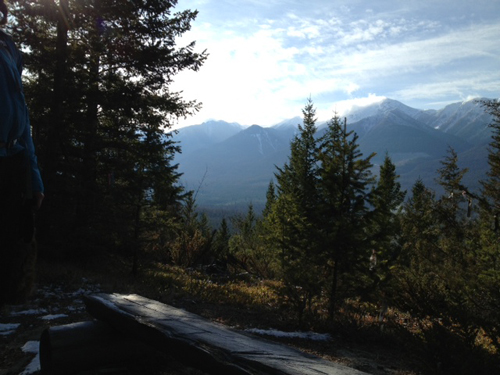
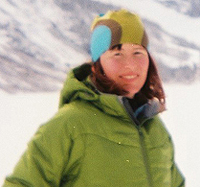 Born in Nova Scotia and emigrating to British Columbia via Ontario and Alberta, Magi has been running the entire way. Primarily defined as a cross country ski racer, Magi has competed nationally and internationally in that sport. The highlight of her career was competing in the World University Games and the World Cup races in Canada in 2007. Cross country skiers rely heavily on running for cross training and Magi has become an accomplished trail and mountain runner, representing Canada at the World Mountain Running Championships in 2005 and the winning numerous national championships medals.
Born in Nova Scotia and emigrating to British Columbia via Ontario and Alberta, Magi has been running the entire way. Primarily defined as a cross country ski racer, Magi has competed nationally and internationally in that sport. The highlight of her career was competing in the World University Games and the World Cup races in Canada in 2007. Cross country skiers rely heavily on running for cross training and Magi has become an accomplished trail and mountain runner, representing Canada at the World Mountain Running Championships in 2005 and the winning numerous national championships medals. 

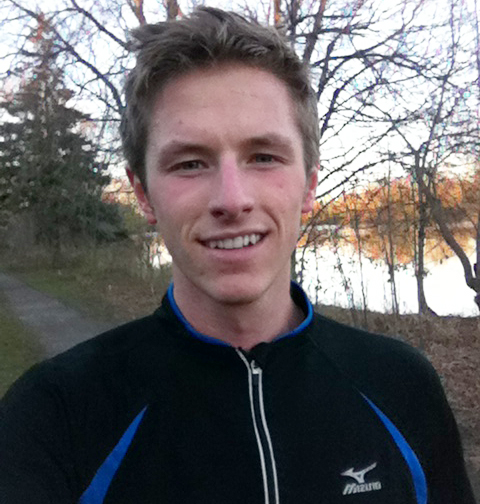
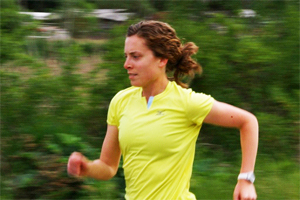
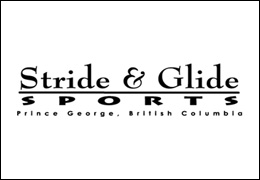 By: Karen Karnis
By: Karen Karnis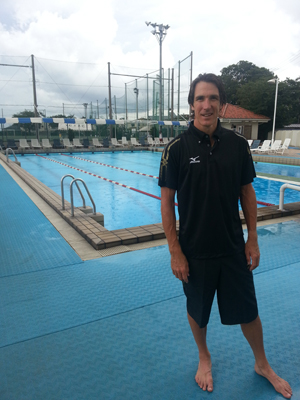 By: Karen Karnis
By: Karen Karnis
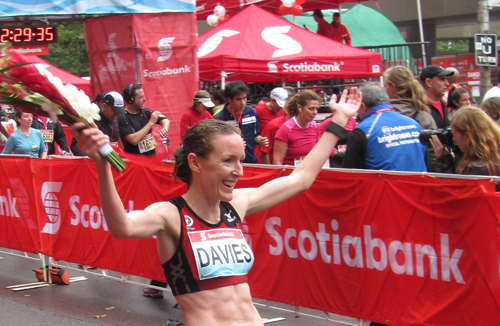

 Title:
Title:  Our Magazine
Our Magazine
